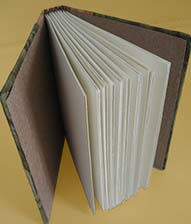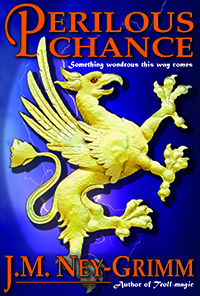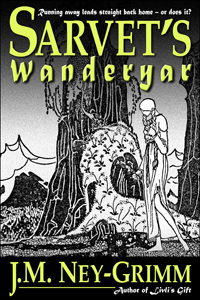 February and half of March saw me studying story openings. I was taking an online workshop and learning a lot.
February and half of March saw me studying story openings. I was taking an online workshop and learning a lot.
What makes a good opening? How does a writer engage the strong interest of her reader?
Writing stories is an art. In a sense, there are as many good opening structures as there are good stories. Every story’s first few paragraphs are unique to that story.
However…you knew there’d be a “however,” didn’t you?
There is a structure that consistently hooks most readers’ attention. This “hook opening” won’t be right for every story, but it serves many of them well.
A character with a problem in a setting.
Pretty simple, isn’t it?
Ah! But how will you introduce your character and his or her problem? How will you mention the setting without slowing the pace too much? Even when borrowing a story foundation honed by the ages, artistry calls!
There’s also one more critical element.
My teacher recounts how that critical element made all the difference for him. Decades ago, when he was first starting out and before he incorporated this key element, he received nothing but form rejections from publishers. After…he received personal letters for his rejections and…a beginning stream of acceptances! That’s how important this is.
What is it?
Ground your reader in what your character is seeing, hearing, touching, smelling, and tasting. Make your opening rich with sensory detail. Your reader will feel like she or he is there, chilled by the breeze, smelling cinnamon, tasting vanilla, hearing chapel bells, and watching the cavalry thunder over the hill crest.
Touch on all five senses in the first three paragraphs and continue to mention them every 500 words.
Is it a formula? Will it generate formulaic writing?
I don’t think so. We humans are corporeal beings, and we relate to our world and the people in it via our bodily senses. Stories are about the human condition, and a story that’s thin on sensory detail is a story rather distant from our human experience.
Consider architecture. (With a degree in architecture, I’m bound to drag it in willy nilly!) The cultural blueprint for house could be considered formulaic: sheltering walls and roof, ways to get in and out, places of privacy within. But think of all the amazing variations: yurts, New England saltboxes, Georgian colonials, Frank Lloyd Wright prairie houses, and on and on. Limits breed art and beauty.
But enough philosophizing!
What does a “hook opening” look like in practice?
Allow me to present some examples.
Before the workshop, I was stumbling in the right direction. As I approached the release of my story Perilous Chance, I sensed something was wrong. I loved the story, and my first readers spoke well of it, too. But, but, but! The opening wasn’t quite right.
This was the original opening:
 That morning, Clary had stood in the front room, turning slowly. The cloth on the table under the windows hung askew, its corner tassel dragging on the weathered pine floor. The candles had guttered in their sockets, the wicks drowning amidst congealed wax. One, burned only halfway, lay fallen under the gluey drips from the gravy boat. Clary’s fingers crept to her mouth.
That morning, Clary had stood in the front room, turning slowly. The cloth on the table under the windows hung askew, its corner tassel dragging on the weathered pine floor. The candles had guttered in their sockets, the wicks drowning amidst congealed wax. One, burned only halfway, lay fallen under the gluey drips from the gravy boat. Clary’s fingers crept to her mouth.
Why did this morning after an impromptu party feel so different?
The murmur of conversation last night, rising to her bed chamber, growing louder as the hour latened, had seemed normal. Uncle Maury’s deep laugh boomed as always. Aunt Theosia’s mandolin sounded as sweet. But it hadn’t been the same.
She stared at the welter of mismatched briar-wicker chairs, one tumbled on its side. I won’t think about that. Or who knocked it over. But she knew who. I won’t think about it, more fiercely.
Lyrus was whimpering upstairs in the nursery. She’d ignored him on her way down, hoping her mother would see to the baby. But she wouldn’t. She hadn’t risen before the children for . . . how long had it been? This was Thyril. Spring. Had it truly been eight months? Last Sanember in fall? Clary drew her fingers away from her lips to count, but she didn’t really care how long it’d been. Too long. What she wanted to know was: would it end?
It’s a great story, one I recommend with enthusiasm. What I did was study it. How was its opening structured? I had to go back and look, since I’d been too engrossed originally to notice.
What Willis did was take a snippet from near the end of her story to generate its opening. There lay my answer! I can’t pretend my story displays Willis’ mastery. She’s been writing for decades and is one of the most renowned SF writers in the world. But the underlying structure of her gem of a tale was perfect for mine. And I knew exactly which snippet in Perilous Chance I would use to generate my opening. Here is the final version that I published (the opening above follows directly on these new paragraphs):
 She was eleven, and she was hurt. Her leg lay under her, knee throbbing. Her arm ached, the broken bone within sickening in its pain. But worst of all, worst of all, a vast shadow loomed above her, dark wings spanning distances too great for the grotto enclosing them, razor-sharp talons sparking with the spitting blue fire of a strange power.
She was eleven, and she was hurt. Her leg lay under her, knee throbbing. Her arm ached, the broken bone within sickening in its pain. But worst of all, worst of all, a vast shadow loomed above her, dark wings spanning distances too great for the grotto enclosing them, razor-sharp talons sparking with the spitting blue fire of a strange power.
“No, please, no,” she whispered.
How had it come to this? Her day had started so ordinarily, getting breakfast for herself and her sister, because Mama could not. She cast her thoughts desperately back to the morning. I’m there. Not here. I’m there.
With Clary and Elspeth, we see the disorder of the front room, we hear Aunt Theosia’s mandolin and Uncle Maury’s laugh. We attempt to ignore the faint whimpers of their baby brother upstairs. We taste the sweetness of the fig syrup. Is it enough? I’ll leave that answer to my readers. Because stories are an art, after all. Sometimes three senses – sight, hearing, taste – might be enough.
In fact, my second assignment for the workshop was to create an opening focused solely on sound. And my teacher declared my effort gripping and compelling. So the rule of all five senses is clearly a guideline rather than a law.
After listening to the first week’s lectures, I pondered my new world view. The information had changed me. I grew pre-occupied with the opening to an already published story. Sarvet’s Wanderyar didn’t have the opening that would do it justice, and…I had an idea! This one was good, this one was better, this one wouldn’t let me go until I wrote it.
So, here’s another before and after. The original opening:
 She awoke to the pleasant consciousness that the morning of a fete-day brings. No chopping cabbage, digging potatoes, or long hours at the spinning wheel awaited her. The preparations for Other-joy were wholly different from normal chores, and this year the calling ritual would include three linking ceremonies!
She awoke to the pleasant consciousness that the morning of a fete-day brings. No chopping cabbage, digging potatoes, or long hours at the spinning wheel awaited her. The preparations for Other-joy were wholly different from normal chores, and this year the calling ritual would include three linking ceremonies!
She smiled with anticipation, started to push herself upright, then changed her mind and snuggled her cheek more deeply into her pillows. Light from the oil lanterns in the hallway was seeping through the chinks around her bednook shutters – Sister Teraisa must already be up – and Sarvet wanted to get up too. But not just yet. Her sheets were so soft, her blankets cozy, and the fur coverlet warm. She wriggled her toes in their bedsocks, ignoring the constraint in her right foot. There was something special to the first beginning of a day, all its promise ahead. She would savor it . . . and avoid a little longer the chilly moment when she doffed her nightcap and gown in order to dress.
 Tense and furious, Sarvet shook her mother’s angry grip from her forearm. “I’ll petition the lodge-meet for filial severance,” she snapped, and then wished she’d swallowed the words, so hateful, too hateful to speak. And yet she’d spoken them.
Tense and furious, Sarvet shook her mother’s angry grip from her forearm. “I’ll petition the lodge-meet for filial severance,” she snapped, and then wished she’d swallowed the words, so hateful, too hateful to speak. And yet she’d spoken them.
The breeze swirling on the mountain slope picked up, nudging the springy branches of the three great pines at Sarvet’s back and purring among their needles. Their scent infused the moving air.
Paiam’s narrowed eyes widened an instant – in hurt? – flicked up to encompass the swaying tree tops behind her daughter, then went flat.
“You dare!” she breathed. “You’re my daughter. Mine alone. And I’ll see to it that you and every other mother in the lodge knows it too. You’ll stay under my aegis till you’re grown, young sister, even if I must declare you careless and remiss to do it!”
Oh!
Sarvet only thought she’d been mad before. “You never wanted me!” she accused.
Was it true? Or was she just aiming for Paiam’s greatest vulnerability, aiming to hurt? Because under her own rage lay . . . desperation. Something needed to change. She just didn’t know what, didn’t know how. And didn’t want to be facing it right now, facing her mother right now. It was Other-joy, and she wanted joy. For just a little longer. How had this day of celebration gone so wrong?
She’d woken to the pleasant consciousness that the morning of a fete-day brings. No chopping cabbage, digging potatoes, or long hours at the spinning wheel awaited her. The preparations for Other-joy were wholly different from normal chores, and this year the calling ritual would include three linking ceremonies!
She remembered smiling with anticipation, starting to push herself upright, then changing her mind to snuggle her cheek more deeply into her pillows. Light from the oil lanterns in the hallway was seeping through the chinks around her bednook shutters – Sister Teraisa must already be up – and Sarvet wanted to get up too. But not just yet. Her sheets were so soft, her blankets cozy, and the fur coverlet warm. She wriggled her toes in their bedsocks, ignoring the constraint in her right foot. There was something special to the first beginning of a day, all its promise ahead. She would savor it . . . and avoid a little longer the chilly moment when she doffed her nightcap and gown in order to dress.
But, before I close, I’d like to share an example that does include all five senses. It’s one of my homework assignments from the workshop. I hope to write the full story, but I think it wants to be a novel, so patience on that one!
Steven glanced down at his tux and shirtfront, then back out through the transparent gleam of the force bubble surrounding his table. His clothes looked cheap compared to those of the other patrons. What else could you expect from a rental? At least they were clean. At least he was clean.
When he’d spotted the lottery ticket in the muck of that back alley, he’d wondered if mere bathing could scrub the garbage stench from his skin. His too-loose coveralls lay sodden against his bony wrists and ankles, slimy with the juices of rotting food. The air was foul enough he could taste it. His hand nipped the foil ticket from its puddle of noxious yuck before he had time to consider otherwise. The liquid burned until he wiped fingers and ticket against his collar, the only dry scrap on him.
He angled the ticket toward the neon glow at the alley mouth. Its plastic coating hiding the winning result was already scraped away. Why would anyone throw away a free dinner at – he squinted – oh, gods and little demons! Fabrine’s.
He’d figured on selling it. Some decent cash to be picked up that way. Enough for a bed in a lockable bunker and a few handrolls out of the vending creche.
But . . . Fabrine’s. Damn!
So he’d called in some favors. Favor’s he’d hoped to save. Favor’s he’d need, if he were ever down and out. More down and out.
And now he occupied a force bubble on the exclusive platform reserved for haute clientele in this purveyor of fine cuisine and deformity. The faint aroma of freshly squeezed lime tingled his nostrils, fighting the sandalwood of his borrowed aftershave. Lighting low enough for intimacy – if he’d brought a dining companion – but bright enough for security (the bodyguards stood outside the bubbles) soothed his eyes. Comfortably firm bolsters supported his back, cushioned the bench under his buttocks. If he were here for a meal – except he’d never come here to simply eat. Did anyone?
His stomach muttered. The murmur of conversation escaping the muffling force bubbles rumbled louder, then subsided.
There was a reason Fabrine’s had the reputation it did: looking for mutations and nightmares? – the haute called them dreams – they were here. Steven? He wanted – needed – an extra arm (with hand attached) smack in the middle of his forehead.
Cover design, cover copy, and story openings are among the top influences in connecting readers with books. My Cover Design Primer presents basic concepts for creating a professional looking book cover. Eyes Glaze Over, Never! introduces the foundations of good cover copy. And my Cover Copy Primer provides more detailed how-to’s for cover text.

